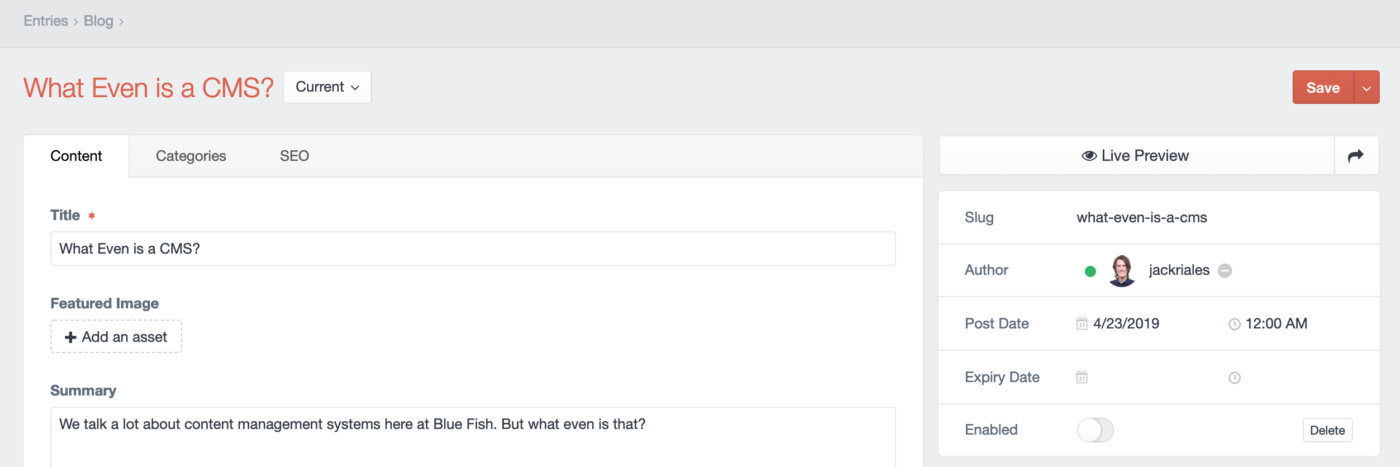

Imagine: You have a website. It’s an okay website. It works, it gets traffic, maybe it even looks good. Life is alright. But you begin to think to yourself, “Hey! I’d like to add some content!” So, what do you do? If you have a web host and a developer with a support retainer, you’d probably ask them to add those changes. But if you’re doing it yourself, what does that process look like? You need to get access to your files, download them, edit your change, upload it back, and hope you didn’t break anything. Sounds good, right?
Hey actually, wait, that sounds awful. Who wants to do that? If you’re wanting your website to be “dynamic,” and want to be able to add content without all that hassle, you need a content management system.
We talk a lot about content management systems here at Blue Fish. But what even is that? A content management system, or CMS, is sometimes called a website’s “back-end,” or “admin” section. Using a CMS, your website will integrate with a database system that your website will read dynamically. That way, you’re not manually editing your web pages each time you want to make an edit. Instead, you’re focusing your time on something more important: making content.
You may have heard of some content management solutions. There are tons of them out there. Wordpress, Django, Drupal, Blogger, Joomla, Magento, Laravel, Craft, and more. Dang! That’s a lot. Which one should you use?
It’s hard to say. Each one has their pro’s and cons. Wordpress is popular as an easy-to-use blogging system, but falls hard when it comes to customization and site marketing. Joomla and Drupal are highly extensible, meaning it’s likely to have tools that can meet your needs, but suffer from code bloat and are likely to show cracks when it comes to SEO.
OK, there’s a lot of technical aspects of CMS’s I won’t bore you with, but essentially the idea of a CMS is a separation of content from layout. For example, say you want a blog on your site. Each entry of the blog is going to effectively look the same, just with different text and images in the middle. A CMS’s job, no matter which one you pick, is to let you have a whole bunch of content, like blog entries, and one layout they can all fit inside. That’s a lot easier to work with, don’t you think?
A CMS separates the content of your website from its layout
Me!
But we’re not just talking about blogs here. In the abstract sense a CMS can be used to reduce strain on a lot of things you might want to do. You might have a page dedicated to showing members of staff, and have those staff members be added in dynamically in the “content” side of things, so you can add and (hopefully not) remove them at will. Or you might want to have a running calendar of events for your business, and use the content section to post them inside of a calendar-like layout. Maybe you want to post dog facts, or something - every day!? The world is your oyster!
Craft is the CMS we choose here at Blue Fish. Unlike many other CMS’s it gives us the power to build your website from scratch, so that it perfectly fits your needs as a business owner, and gives you the power to add content easily. We’ll even show you how to do it. Sounds nice? Give us a shout at hi@bluefishds.com and let’s talk about it!

